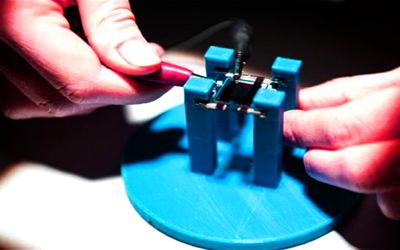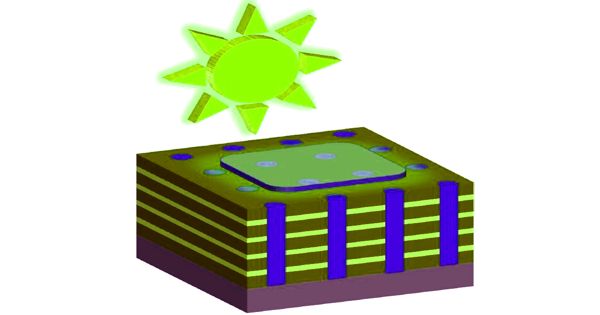A new method for constructing special solar cells could greatly boost their performance. Not only are cells made up of thin layers, they often consist of specially arranged nano blocks. This was illustrated in a recent report by an international research team headed by the Martin Luther University Halle-Wittenberg (MLU) published in the scientific journal Nano Letters.
The commercially available solar cells are mainly made of silicone. “Based on the properties of silicon, it’s not feasible to say that their efficiency can be increased indefinitely,” says Dr. Akash Bhatnagar, a physicist at the Centre for Innovation Competence (ZIK) “SiLi-nano” at MLU. His research team is also researching the so-called anomalous photovoltaic effect that exists in some materials. An anomalous photovoltaic effect does not involve a p-n junction that would otherwise cause the current to flow through silicon solar cells.
A new method for constructing special solar cells could significantly increase their efficiency. Not only are the cells made up of thin layers, they also consist of specifically arranged nano blocks.
At the atomic level, the position of the current is determined by the asymmetrical crystal structure of the respective materials. These components are typically oxides and have certain key advantages: they are cheaper to produce and are significantly more durable. However, they also do not absorb a lot of sunlight and have a very high electrical resistance. “In order to utilize these materials and their effect, creative cell architectures are needed that reinforce the advantages and compensate for the disadvantages,” explains Lutz Mühlenbein, lead author of the report.

In their recent research, physicists have introduced a novel cell architecture, the so-called nanocomposite. They were sponsored by teams from Bergakademie Freiberg, Leibniz Institute for Surface Modification in Leipzig and Banaras Hindu University in India. In their experiment, researchers layered single layers of standard material of just a few nanometres of thickness on top of each other and offset them with nickel oxide strips running perpendicularly. “The strips act as a fast lane for the electrons that are generated when sunlight is converted into electricity and which are meant to reach the electrode in the solar cell,” Bhatnagar explains. This is precisely the transport that would otherwise be impeded by the electrons having to traverse each individual horizontal layer.
The new design simply improved the electrical output of the cell by a factor of five. Another advantage of the current approach is that it’s very easy to introduce. “The material forms this desired structure on its own. No extreme external conditions are needed to force it into this state,” says Mühlenbein. The concept for which the researchers have now requested an initial feasibility analysis could also be extended to materials other than nickel oxide. Follow-up studies now need to investigate whether and how many solar cells can be manufactured on an industrial scale.













